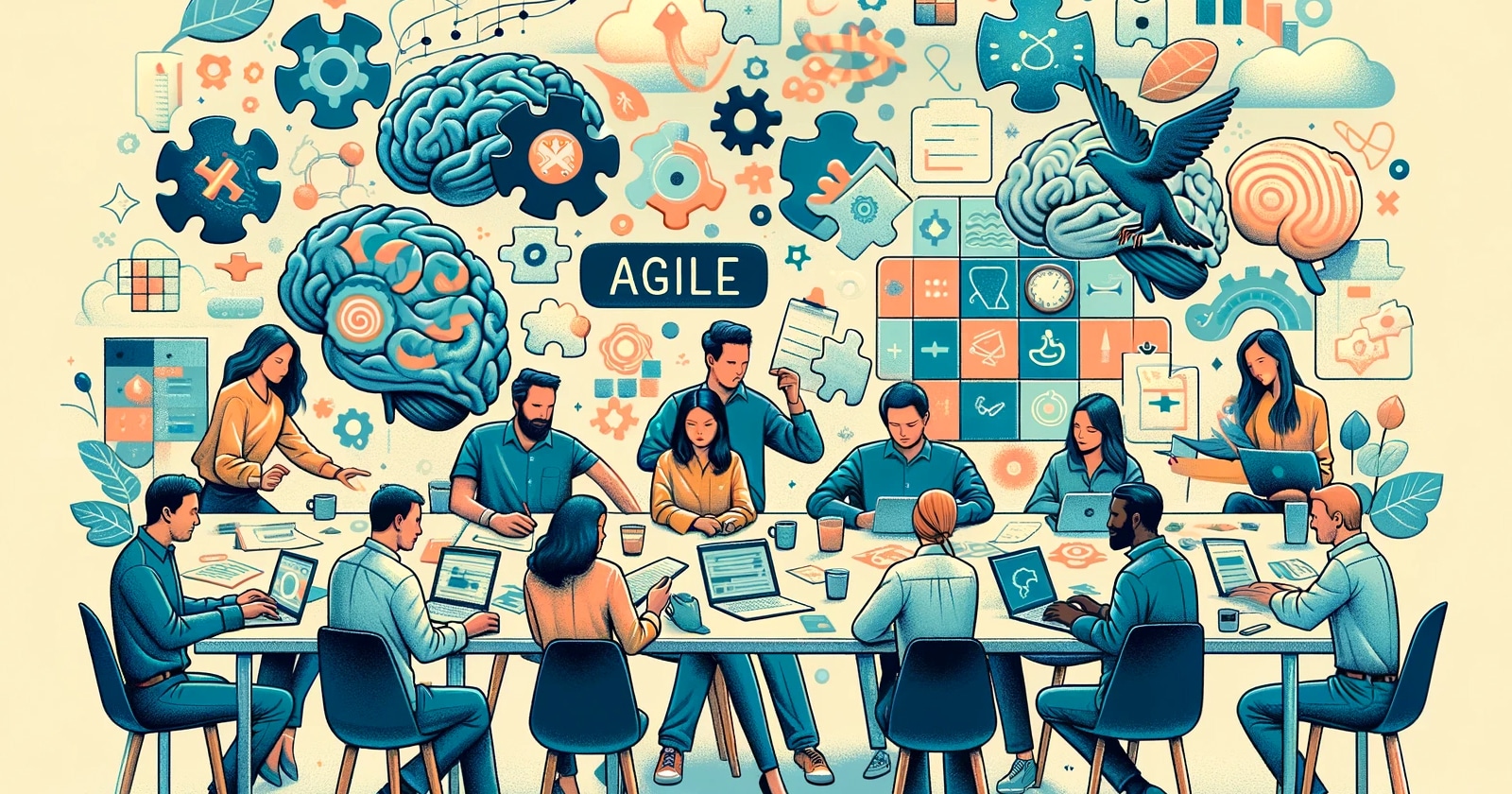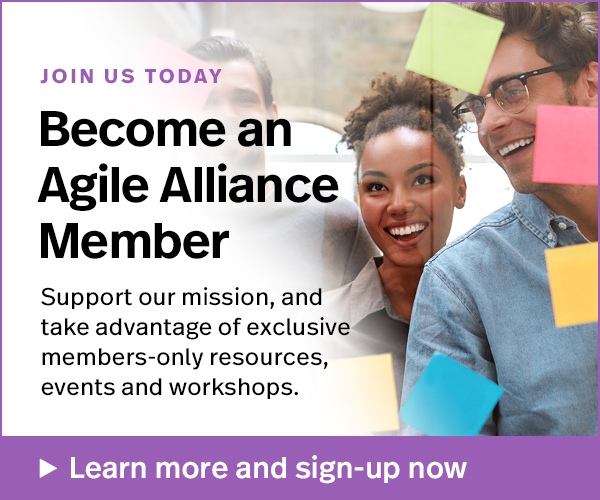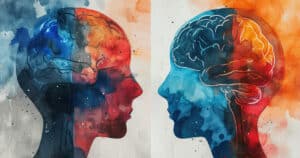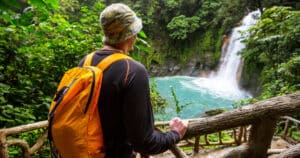When we think of Individuals and Interactions, we generally think this value emphasizes the importance of the people involved in software development. We consider work/life balance, motivated and energized teams, and respect for one another.
However, with all the hustle and bustle, we can easily become tunnel-visioned and fall slaves to the tyranny of the majority. Amid our busy routines, it’s easy to overlook the needs of neurodiverse individuals, who may feel invisible or struggle with traditional Agile practices.
This article aims to shed light on the significance of accommodating neurodiversity and provide practical tips for creating an inclusive and effective Agile team.
Some traditional Agile practices may be daunting
Some of the traditional Agile practices and ceremonies may be daunting and generate anxiety. For example, have you ever had that one person that never speaks up in retrospectives? We try to find ways to engage them and draw them into the conversation, but what if they are sitting silently in the retro having a panic attack and praying not to be called upon or noticed? This doesn’t mean they aren’t a contributing member of the team. They just process information a little differently.
Neurodiversity is the accepted concept that different ways of thinking and processing information are normal and should be valued. As Agile leaders, we should champion, celebrate, integrate, and empower all members to achieve their team and individual goals.
So, how can we, as Agilists and servant leaders, create an environment that enables disability and neurodiversity inclusion and equity?
Recommendations from the trenches
Below are some tips for dealing with neurodiversity in a work environment.
- Understanding neurodiversity: Neurodiversity recognizes that different thinking styles and information processing methods are normal and valuable. Conditions like autism, ADHD, and dyslexia are part of this diverse spectrum. By acknowledging and accepting these differences, we can foster an environment that appreciates the unique perspectives and skills of all team members.
- Championing inclusion and equity: As Agile leaders, it is our responsibility to champion, celebrate, integrate, and empower all team members, including those with neurodiversity. By actively promoting diversity and creating an inclusive work environment, we can harness the full potential of our teams and encourage innovation and creativity.
- Building awareness: Raising awareness about neurodiversity within the Agile team is crucial. Educate team members about different neurological conditions and their potential impact on work processes. Encourage open and respectful discussions, fostering empathy and understanding among team members.
- Flexible communication and collaboration: Recognize that neurodiverse individuals may have unique communication preferences. Encourage various communication channels, such as written, verbal, or visual, to accommodate different processing styles. Foster an environment where team members feel comfortable expressing their ideas in ways that suit them best.
- Tailoring Agile practices: Some Agile ceremonies, like retrospectives, can be overwhelming for neurodiverse individuals. Instead of relying solely on traditional formats, introduce alternative methods for gathering feedback and insights. Offer options such as written retrospectives or one-on-one sessions, allowing individuals to contribute in a manner that suits their comfort levels.
- Providing support: Offering support to neurodiverse team members is essential. Encourage open dialogue and create a safe space for individuals to express their needs and concerns. Consider implementing mentoring programs or providing additional resources, such as assistive technologies, to facilitate their work and promote their growth within the team.
- Continuous learning and improvement: Neurodiversity is a journey of continuous learning and improvement. Regularly seek feedback from team members and adapt your approach accordingly. Embrace a growth mindset, and be open to making necessary adjustments to ensure an inclusive environment where everyone can thrive.
A real-life story
A few years ago, I had an exceptional software developer who joined an Agile team. We’ll call him Lucas.
Lucas possesses a remarkable ability to think analytically and solve complex problems. He is an excellent developer and came up with some innovative solutions.
However, the fast-paced and socially demanding environment of our Agile team presented unique challenges for Lucas. In our Agile events, he struggled to navigate the rapid exchanges of ideas and often found it difficult to voice thoughts and contribute to discussions.
The pressure to conform to the team’s extroverted communication style led to anxiety and self-doubt, hindering Lucas’s ability to fully express his talents and expertise. He was often quiet and said very little, didn’t come to team-building events, and stayed off-camera.
Being an introvert myself, I started to pick up on some of these nuances, especially when Lucas would message or email me after the meeting with his idea or solution to <the problem of the day>, or with his feedback on the prior sprint.
I decided to have a one-on-one chat with Lucas, off-camera.
It turned out that Lucas is on the Autism spectrum, and has severe social anxiety, which is why he was uncomfortable speaking up in our retrospectives and Agile events. Still, I recognized his immense potential and understood the importance of accommodating neurodiversity.
After talking with Lucas a few times and asking him how to make his job easier and ease his discomfort, we altered some of our team practices.
- We introduced a visual Kanban board (even though we were a Scrum team) and adjusted our Agile event agendas to allow more processing time during meetings, ensuring that everyone had an equal opportunity to contribute.
- I started creating anonymous surveys in advance of the retrospective and using the results to steer the conversation.
- Additionally, I established regular one-on-one check-ins with Lucas, providing a safe space for open communication and addressing any concerns.
With these adjustments and the unwavering support of the team, Lucas began to thrive and contribute valuable insights and solutions that propelled the team’s success.
Through empathy, understanding, and a commitment to inclusivity, our Agile team embraced neurodiversity and unlocked the full potential of our talented autistic team member.
Embrace inclusive practices
In a discussion with Beth Whitmer, who is a fellow Agilist, an Accessibility SME, and an advocate for Neurodiversity, she shared the following:
I really appreciate how Agile provides an opportunity to embrace inclusive practices at the team level. Traditionally, the workplace accommodations process has centered on identifying strategies to support a specific individual, which means the individual works with HR and their manager to get their specific need met.
However, there are times when accommodating a particular need at the team level could allow more people to benefit. A good example of this is providing extra time for sending in retrospective feedback so that a neurodivergent person has more time to compose their thoughts; this same accommodation at the team level could also benefit someone who is not a native English speaker.
Agile provides an excellent opportunity to continually explore whether the individual needs of a team member could be best served by a team-level process change that could benefit the entire team.
– Beth Whitmer
According to Forbes, 2021 was the year that the neurodiversity movement came of age and there has been a significant rise in the number of people, like Lucas…and me…who are recognizing they are neurodivergent.
Cultivating inclusivity and empowerment
Agile principles and values are actually well-suited to neurodiverse individuals because we value individual interactions and collaboration over rigid processes.
If truly embracing the “spirit of Agile,” then Agile teams are encouraged to adapt to the strengths and weaknesses of each team member and to find ways to work together that allow everyone to contribute to their fullest potential.
The Agile mindset even infers that we think outside of the box and find ways of working that are effective and conducive to all, including those who are neurodiverse. Embracing neurodiversity within an Agile team fosters a culture of inclusivity, innovation, and collaboration.
Let us strive to create a work environment where every team member feels valued and empowered, regardless of our neurological differences. Don’t do Agile; be Agile!











